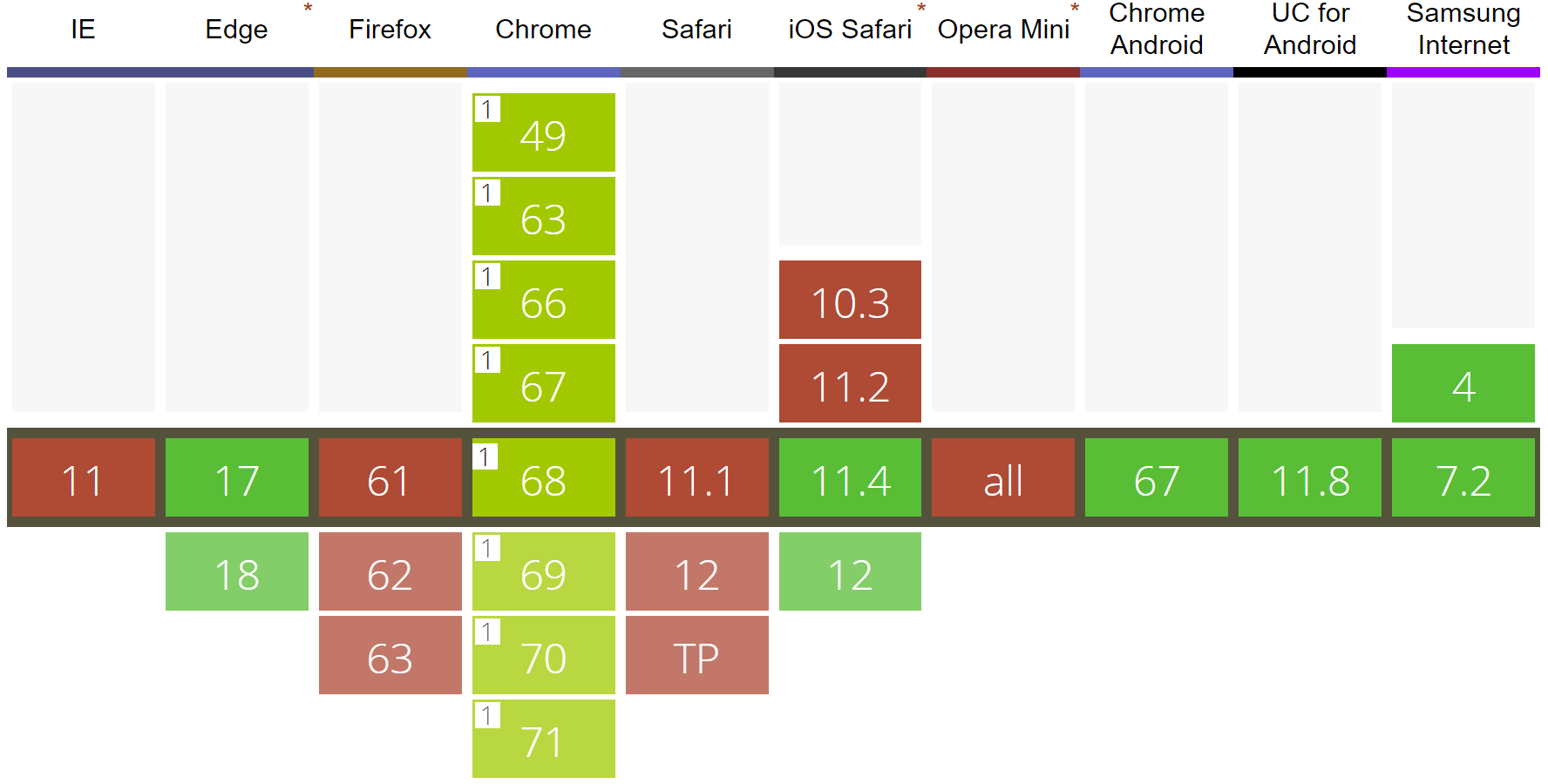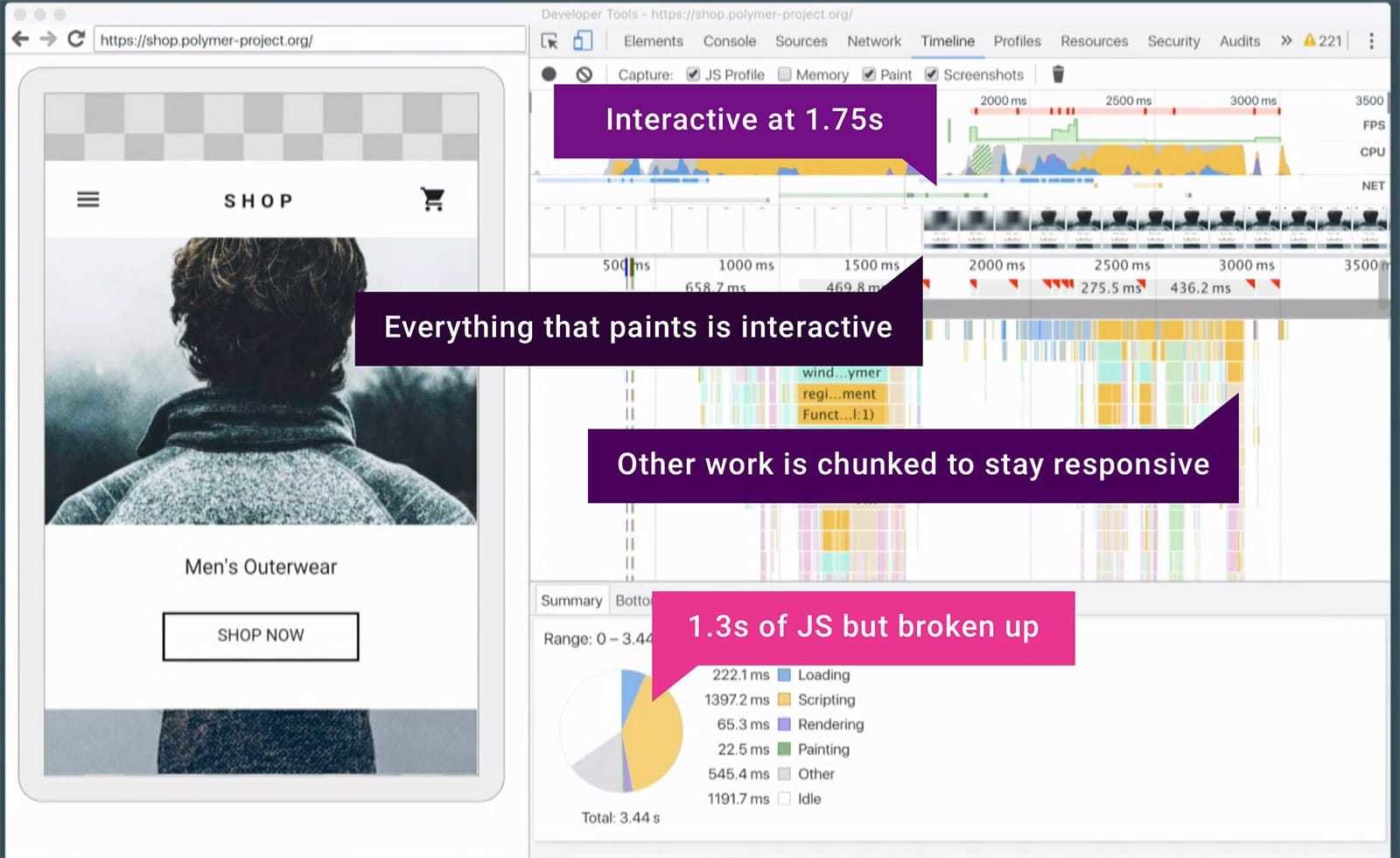PWA Primer
Introduction and mindset presentation for writing PWA applications.
by Gion Kunz

What is PWA?
PWA is the future!
Who is using PWA?
- Twitter Lite
- Starbucks
- Uber
- Spotify
- many more...
- Progressive - Work for every user, regardless of browser choice because they’re built with progressive enhancement as a core tenet.
- Responsive - Fit any form factor, desktop, mobile, tablet, or whatever is next.
- Connectivity independent - Enhanced with service workers to work offline or on low quality networks.
- App-like - Use the app-shell model to provide app-style navigations and interactions.
- Fresh - Always up-to-date thanks to the service worker update process.
- Safe - Served via TLS to prevent snooping and ensure content hasn’t been tampered with.
- Discoverable - Are identifiable as “applications” thanks to W3C manifests and service worker registration scope allowing search engines to find them.
- Re-engageable - Make re-engagement easy through features like push notifications.
- Installable - Allow users to “keep” apps they find most useful on their home screen without the hassle of an app store.
- Linkable - Easily share via URL and not require complex installation.
To PWA OR NOT TO PWA?
How much PWA?
Technologies
- Service Workers - Offline capabilities and updates
- Web App Manifest - Application Meta Data
- Cache API - Allows fast caching of HTTP Responses
- IndexedDB - Client side storage for content
- Notification API - Native system notifications
- Push API - Receive server messages
- Background Sync - Service workers sync in background
Service Workers
caniuse, July 2020, global 1%

- Intercepts HTTP requests
- Allows to cache responses
- Life-cycle Management
- Runs in a different Thread than UI
- Supports Push API* and Background Sync*
* In some browsers ;-)
navigator.serviceWorker
.register('/sw.js', { scope: '/sw-example/' })
.then(reg => {
// Registration succeeded
}).catch(error => {
// Error
});// Install phase
self.addEventListener('install', event => {
event.waitUntil(
caches.open('v1').then(cache => {
return cache.addAll([
'/sw-examples/',
'/sw-examples/index.html',
'/sw-examples/style.css',
'/sw-examples/app.js'
]);
})
);
});
// Fetch interception proxy, try cache, load and cache on miss
self.addEventListener('fetch', event => {
event.respondWith(
caches.match(event.request)
.then(response => {
return response ||
fetch(event.request).then(response => {
caches.open('v1').then(cache =>
cache.put(event.request, response.clone());
);
return response;
});
}));
});
Service worker Cache is Fast... REEEEEEEEEEEEEEEEEEEEEEEEEEEEEEEALLY fast......
Twitter Lite Case Study
- 65% increase in pages per session
- 75% increase in Tweets sent
- 20% decrease in bounce rate
Cache for SPeed, Cache for Offline!
Web App Manifest

caniuse, August 2018
- Allows to specify meta-data which can be used by the OS
- App specific settings (icons, title, links to app store etc.)
{
"name": "HackerWeb",
"short_name": "HackerWeb",
"start_url": ".",
"display": "standalone",
"background_color" : "#fff" ,
"description": "Simple HackerNews Web App.",
"Icons": [{
"src": "images/touch/homescreen48.png",
"sizes": "48x48",
"type": "image/png"
}
.....Microsoft Store auto discovery using Bing
- A non-empty web app manifest file, with at minimum:
- Name
- Description
- App icon icon that is at least 512 x 512 pixels
- Unique core logic (not minimally modified code from an app boilerplate template)
- To be served over a secure connection (HTTPS)
- Service worker script(s)
- To not violate any laws or Microsoft Store policies.
Background Sync
caniuse, July 2020, gloabl 1%

- Keeps service worker running until connection is stable
- Executes callback which allows to store updates on server
- Use the Notification API to notify user about progress
Add To Home Screen

caniuse, July 2020, gloabl 1%
- Allows users to "install" a PWA to their OS
- Extended reach and lower barrier to entry

Add to home screen in Chrome for Windows!
Best practices and patterns
PRPL is a pattern for structuring and serving Progressive Web Apps (PWAs), with an emphasis on the performance of app delivery and launch.
PRPL
- Push critical resources for the initial URL route.
- Render initial route.
- Pre-cache remaining routes.
- Lazy-load and create remaining routes on demand.

Service Worker Patterns
PWA needs proper design
- What can be done offline and what not?
- How do we guide the user through offline capabilities?
- How do we solve synchronization issues?
- How do we update old clients (and reeeeeeeally old clients)
Angular and PWA
- CLI can manage your service worker including updates and automatic asset caching
- CLI creates App Manifest
- Perfectly matches the PRPL pattern
- Build your App Shell in the index.html or use Server Side Rendering
Create a PWA Angular app
npm install -g @angular/cli
ng new example-pwa
cd example-pwa
ng add @angular/pwa
Follow PRPL Pattern with Lazy Loading and preload
@NgModule ({
bootstrap: [AppComponent],
imports: [
RouterModule.forRoot(ROUTES, {
preloadingStrategy: PreloadAllModules
})
]
})
class MainModule {}Conclusion
- PWA is the future!
- PWA is not a framework!
- PWA is a set of concepts and best-practices supported by various web standards
- Progressive enhancement and feature detection with graceful fallbacks
- PWA technology support is getting better and better
- Include PWA as a core concept at the earliest point in the project possible (analysis and design)
Let's create together.

Thanks!

